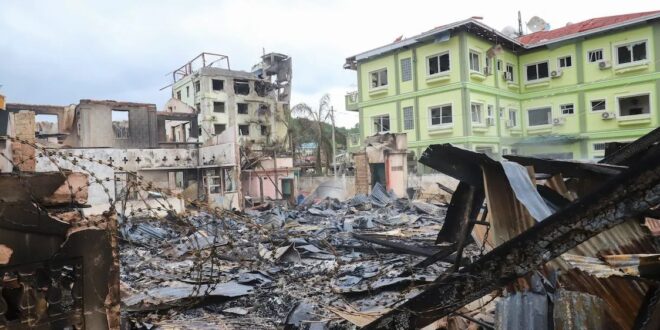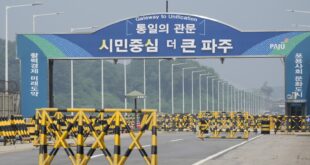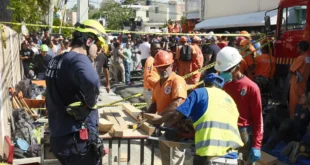Countries are hit by disasters. A massive earthquake, which recorded a size of 7.8 on the Richter scale, struck the country with a fatal blow. The epicenter of a poor region, hundreds of kilometers from the country’s busy cities, has been left devastated. In this article, we consider a study that has been burdened by political and economic instability for decades, the specificity of earthquakes, community impacts, Myanmar’s challenges in dealing with such devastating events, and the global response to the country. Natural disasters have always been an impressive force that a country must fight independently of size, prosperity, or political stability. The physical destruction and human suffering caused by events such as earthquakes, floods, and hurricanes leave deep prints on both the affected communities and the people. When disasters occur, national weaknesses are revealed in terms of geographical, social, and political structure.
In countries where sustainable challenges must be addressed, the devastation of major natural disasters can be devastating. Myanmar is a country that has been deeply affected by decades of political unrest and economic instability, and these weaknesses are unfamiliar. The epicenter of the earthquake was in areas of the country affected by poverty, far from the busy urban centers of Yangon, Mandalay, and Naypyidaw. Thousands were killed, injured, or evacuated as the entire village was reduced to fragments, as the tremors in Myanmar were felt. The destruction went deep into the heart of Myanmar’s most endangered region, strengthening the country’s existing challenges and highlighting its vulnerable infrastructure and governance systems. Due to decades of political instability combined with economic struggles, the country was inadequately capable of responding to such a massive tragedy.
People in Myanmar are already fighting poverty and limited access to essential services in a bad situation where life losses have been strengthened by the lack of emergency resources, health infrastructure, and basic support systems. It examines Myanmar’s ability to effectively treat disasters, the impact of earthquakes on affected communities, and the continued political and economic instability that hinders the global response to this recent disaster. The challenges in Myanmar, where it is difficult to deal with such overwhelming events, not only reflect the immediate pain of disasters but also highlight the deeply rooted issues that the country continues to have with epidemics.
Earthquakes act as a dark memory that the challenges Myanmar faces are not only limited to political instability but are closely related to susceptibility to natural disasters. By understanding the complex cuts of these factors, we can begin to understand the depth of Myanmar’s battle and the global responsibility for its recovery. By understanding the entire scope of the crisis and the underlying issues, we can begin to follow the path of Myanmar. Myanmar needs to not only address the pressing needs of those affected but also the systemic challenges that hinder the country’s long-term resistance.
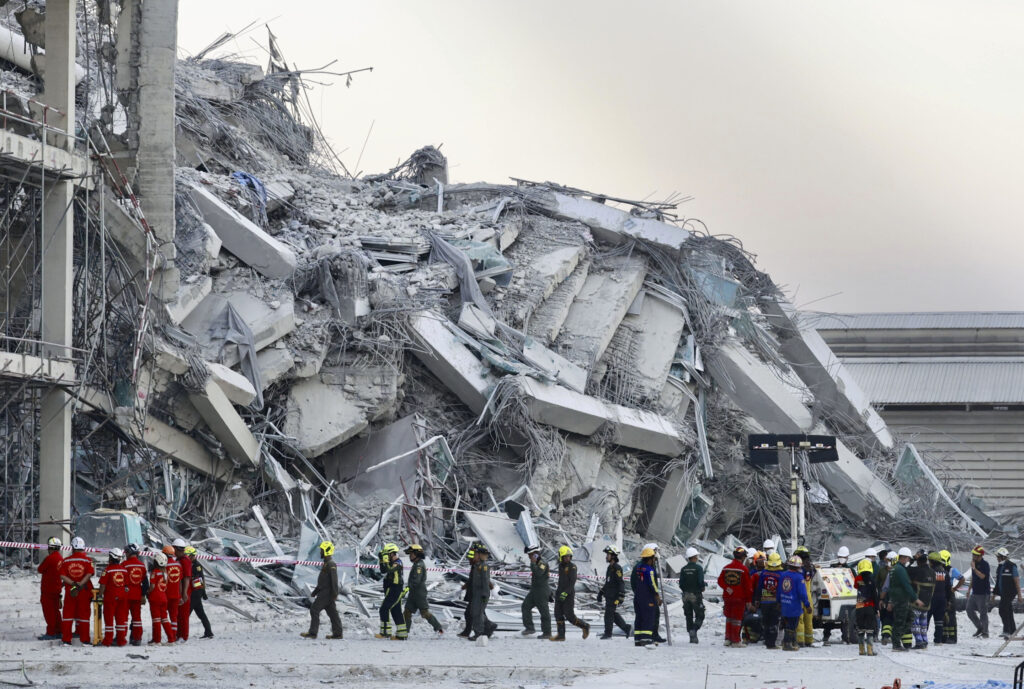
Ramifications:
Geographical spread of damage:
Earthquakes reach hundreds of miles from the largest urban areas, with poor rural areas causing the most significant damage. Two of Myanmar’s poorest and far-reaching regions, Kachin and Shan, suffered the worst destruction. Although there are many ethnic minorities in these areas, the lack of reasonable infrastructure and emergency prevention makes them particularly susceptible to earthquakes. Streets, bridges, and communications networks were destroyed, and villages were reduced to abandoned. The worst areas were those that were already struggling with the socioeconomic consequences of long-term political conflict, limited state intervention, and continued poverty.
Myanmar’s Vulnerability: Country of Crisis:
The country of Political and Economic Fighting has exposed considerable political instability in recent years, particularly since the 2021 military coup. Political turbulence has largely negated Myanmar’s ability to effectively prepare or respond to natural disasters. Economic instability was not abundant, leading to important resources, including disaster prevention and funding for subsidies. As a result, the country’s ability to deal with disasters of this magnitude was severely affected.
Poverty and Infrastructure Flaws. One of the main factors that strengthened the impact of the Myanmar earthquake was the ubiquitous poverty of the country. The rural areas affected by the earthquake were already fighting high poverty as they only had limited access to basic services such as health care, education, and clean water. 😉
This safety sensitivity has been improved due to a lack of basic infrastructure, such as roads, hospitals, and emergency services. The country’s limited ability to access international assistance about poor internal road systems made it difficult for rescuers to quickly reach the most destroyed areas. Many communities were isolated, survivors were caught under the rubble, and the entire village disappeared into the land caused by the trembling.
Human costs: Victims and evacuation: Deaths and injuries
Recent reports show that the death toll has exceeded 5,000, with thousands more injured. Many of the people killed were in remote villages where the buildings were inadequately constructed and there was no reasonable seismic reinforcement. The extent of destruction was exacerbated by the lack of production of such a major earthquake. The injured were left without proper medical care and lacked basic needs such as food, water, and sanitation facilities. The earthquake invalidated an already at-risk health system, either because many doctors and nurses themselves were victims or the areas involved were not reached.
The earthquake displaces tens of thousands of people, many fleeing homes and seeking temporary shelters and refugee camps. Today, many families are homeless and live in overcrowded conditions, where sanitation is a key issue. While some survivors are looking to evacuate to neighboring countries such as Thailand and China, mass immigration poses challenges for those who flee destruction and for countries receiving refugees. The long-term impact of this shift is probably severe. Many of the displaced people come from poor rural areas that had no resources before the earthquake. Today, these survivors of an uncertain future are exposed to food, clean water, or medical care. Although international help is on, the country’s infrastructure is severely damaged, and it was slow to distribute resources to the most affected areas.
International Reactions and Supplementary Efforts:
Humanitarian Aid The international community responded to expressions of humanitarian aid, but there were considerable challenges in the destroyed regions of Myanmar. Many countries, including the US, Japan, India, and the European Union, are obligated to provide financial aid, healthcare, personnel, and more. However, access to the affected area remains a challenge due to extensive destruction of the streets and infrastructure, and medicines are lacking, and ongoing subsidized workers have made it difficult for aid workers to reach certain areas.
You can also read this: Earthquake Felt in EI Paso: Geological Survey, There was a 4.9 Magnitude Earthquake about 30 Miles
Myanmar’s military regime complicated the situation of international aid organizations. The junta reluctantly refused to cooperate fully with external aid organizations, as they feared that foreign participation could undermine control over the country. In some cases, foreign aid was delayed or restricted, and the administration sought to control the distribution of resources to ensure authority through disaster responses.
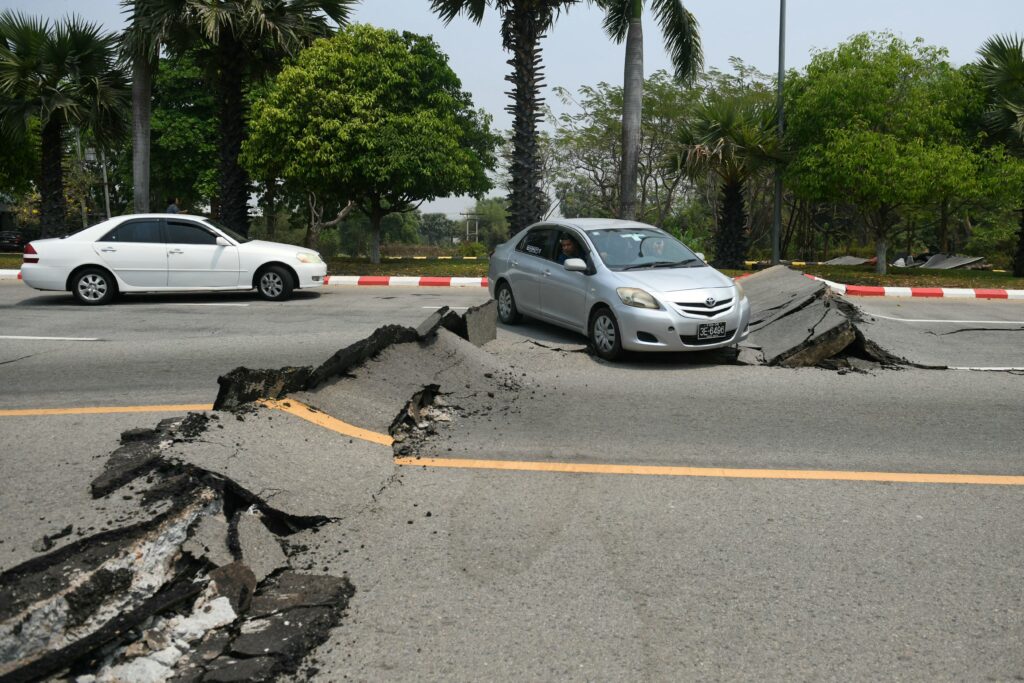
Despite these challenges, efforts have been made to cooperate with local civil society organizations operating despite the political situation in Myanmar. These groups are often the best people to reach rural-affected communities. However, their efforts are severely hampered by the current political and logistical challenges of the military government.
Reconstruction of infrastructure after the earthquake:
The question is how the destroyed infrastructure was reconstructed in Myanmar. Considering the endangered infrastructure and the continued political instability of the country and reconstruction. Although international support is needed, the country’s political situation makes it difficult to predict cooperation between Myanmar’s military and the international community. However, the lack of investment in basic infrastructure before this catastrophe means that many regions face long-term recreational challenges.
The earthquake highlights the sensitivity to the safety of Myanmar’s poorest communities. International aid can provide temporary relief, but long-term investments in infrastructure and human development are required to combat the major causes of vulnerability, such as poverty, health, and inadequate education.;) Without a stable government that can provide the resources needed and coordinated answers, it is unclear how the country can restructure and secure citizen drilling.
Myanmar’s advances after a disaster:
The earthquake that Myanmar experienced in 2025 serves as a tragic memory of the country’s lowest vulnerability, especially in the most marginalized communities. At a size of 7.8 on the scale of a judge, the earthquake caused catastrophic damage in rural areas already burdened by poverty, inadequate infrastructure, and political instability. The immediate effects of catastrophes related to the loss of people were most felt by those who were destroyed and displaced, but the long-term effects are a significant gap in Myanmar’s ability to respond to such a crisis. Food, water, medical care, and temporary accommodation were extremely important for immediate relief. But like natural disasters, the reality is that such help only serves as a temporary solution. This is necessary, but the help does not address deeper structural issues that Myanmar has made so vulnerable. The lack of effective infrastructure, poor health systems, and underdeveloped educational frameworks are some of the most important challenges that must be addressed to mitigate the impact of future disasters and create long-term resistance.
The country’s health system urgently needs to expand and strengthen, and in many regions, there is still a shortage of basic health facilities and qualified professionals.;) The fight against these topics will require both the central government and the international community. Myanmar’s civilian government was overthrown in the 2021 military coup, and the nation was affected. These political turmoils disrupted governance and thwarted the country’s ability to effectively respond to the crisis. The broken, weakened political system will certainly allow Myanmar to achieve coordinated efforts for an inclusive national recovery. Without this leadership, Myanmar will take risks in a cycle of dependence on international aid and will not be able to free the community from the systemic problems that have affected both natural and artificial crises.
